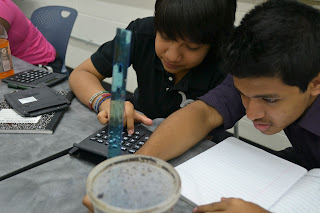On our last day together, students and instructors worked tirelessly to add any final touches to our city. Although our city had been completed yesterday, the real challenge was to transfer all of the canvas, models and demonstrations downstairs to the display room. With the help of everybody, we were able to do this effortlessly.
When the clock stroked 5:00 pm, we opened our doors and welcomed everybody who came to see the fruits of our labor. The cities and demonstrations were a success. Our students were able to explain to our guests why our city is smart and how certain technologies, just like companion farming, work together to help the city be more efficient, convenient, clean and smart. Eon and Genesis were in charge of demonstrating the energy week's activities, and they did an excellent job showing guests how a solenoid generates electricity; a small scale model of how electricity is produced in our power plants. As a college student and a camp instructor, I am very proud of all of our students today because they've all worked really hard to put the cities together, learned a lot and had fun in the meantime.
 |
| Breadboard hotels in Clearview city. On the demonstration tables, the breadboard buildings have LED lightbulbs connected in series to a wind turbine. |
 |
| Summer of Smart Cities summer 2012 staff, thank you all for making this possible. |
If knowledge and intelligence can be weighed on a nanoscale, parents, your kids had gained a bit of weight over the course of this program. On behalf of the staff at the Science of Smart Cities summer 2012 program, thank you for being a part of this experience, good bye.
































